Stimulants like Adderall increase body temperature, blood pressure, and heart rate. When used for a prolonged period, especially in high doses, they can damage the heart and cardiovascular system.
The most common medical issues arising from Adderall use are high blood pressure and tachycardia, as published in the National Institute of Health. But a 2017 study reveals that those who abuse stimulant drugs, like Adderall, show signs of premature aging in their cardiovascular system.
It is natural for physiological processes to fail after years of working hard. However, stimulant abuse tends to compound and expedite this process. Experts believe that stimulant and drugs like Adderall disrupt the normal stem cell-functioning and cell division which can lead to serious heart problems.
When tachycardia – a heart rate over 100 beats per minute – develops, one may encounter a range of complications. They may have blood clots, heart failure and even sudden death. There are numerous types of tachycardia, but the most common one is atrial fibrillation. Atrial fibrillation is a rapid heart rate that arises from irregular, chaotic electrical impulses in the atria. These signals cause quick, uncoordinated, weak contractions of the upper chambers of the heart.
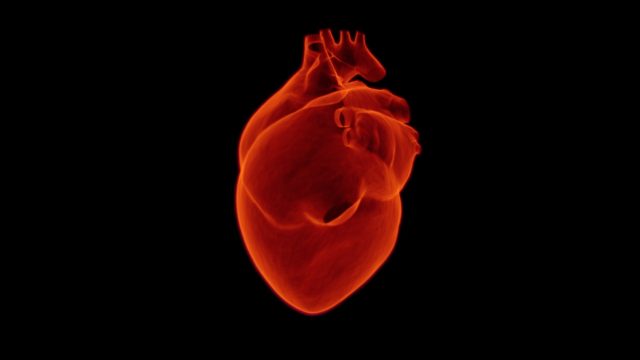
Stimulant drugs, like Adderall can cause the heart to work harder and pump faster than it needs to. This can lead to serious negative health consequences.
When the heart beats too fast, it may not supply enough blood to other parts of the body. This may starve tissues and organs of nutrients and oxygen and lead to the following symptoms:
Adderall is a prescription drug that treats narcolepsy and Attention Deficit Hyperactivity Disorder (ADHD). It's a blend of two drugs: amphetamine and dextroamphetamine and is the number one treatment option for ADHD. Adderall enhances focus and attention and reduces impulsive behaviors. Studies show that 75% to 80% of children with ADHD will notice a positive change in symptoms using stimulants like Adderall. In fact, Adderall is considered part of a complete treatment program.
In addition to ADHD and narcolepsy, Adderall can be used for Attention Deficit Disorder and bipolar disorder. Although the drug isn't approved by the FDA to treat bipolar disorder, it may be prescribed off-label during depressive episodes to increase energy and lift the mood.
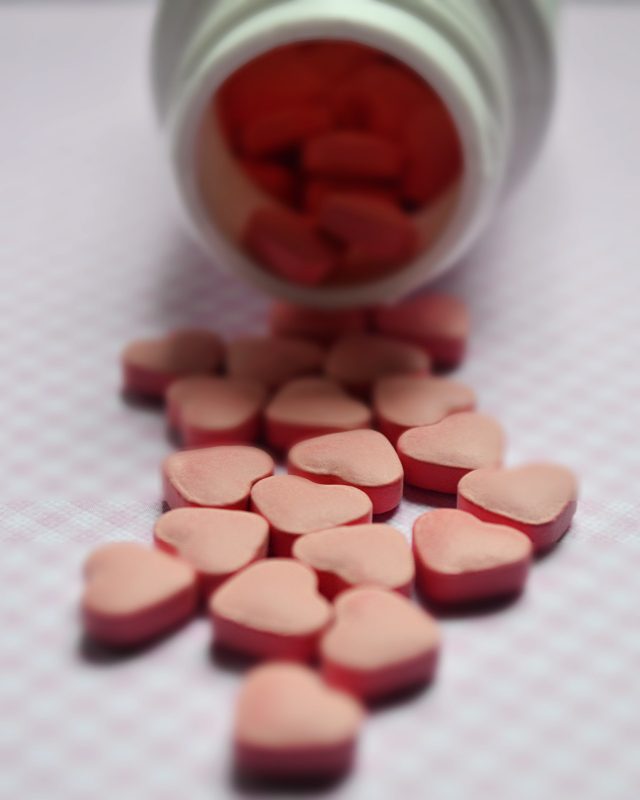
Like any other type of prescription drug, Adderall can be abused.
Most ADHD stimulant medications, like Ritalin, Adderall, and Adderall XR, fall into the Schedule II category. They are legal but considered dangerous due to their high risk of dependence and abuse. Like with other stimulants, one can abuse and develop a dependence on Adderall. Research indicates that a growing number of people without ADHD are using Adderall illegally.
Experts believe that ADHD happens because of signal problems in the brain. So, the Adderall stimulates parts of the brains (mainly the prefrontal cortex) to receive more signals. The prefrontal cortex controls thoughts and behavior. When an average person (a person without ADHD) takes this medication, they get more activity in the prefrontal cortex. This increases their metabolism and concentration and makes them more alert.
People – especially those in college – abuse Adderall to perform better at work or school, or to feel more focused and alert. Students use it as a smart drug to combat the pressures of higher education. Others use it because it creates a feeling of euphoria. When Adderall is injected or snorted, it can cause a "high" that resembles cocaine. This may, in turn, result in physical and psychological dependence on these drugs.

Many college students use Adderall without a prescription. They feel it helps them meet the high demands of their academic life on campus.
When taken as directed by a doctor, there's little risk of addiction. But when used recreationally for the "high," the risk of Adderall abuse increases. Like other drugs of abuse, stopping Adderall may cause withdrawal symptoms. Those who quit after using high doses for a while may experience depression, fatigue, and tiredness.
So, in the case of addiction and dependence issues, one should find help through an addiction treatment facility. Addiction centers have experts and processes in place to help patients gain control and live a clean, healthy life.
Adderall has a profound effect on the cardiovascular system since it serves as a central nervous system stimulant. It increases heart rate, breathing, and blood pressure and lessens appetite. Although it's effective at making one feel alert, energetic, cheerful, and confident, and less tired or bored, the drug is linked to a range of negative side effects.
Adderall use can cause changes relating to sexual performance and sex drive. Its use is often linked to feelings of irritability, restlessness, and anxiety.
Long term side effects of heavy Adderall use include dizziness, dry mouth, and weight loss, and abdominal pain. Users may also experience blood clots, breathing issues, heart muscle weakness, suicidal thoughts, heart palpitations, atrial fibrillation, and heart diseases. An allergic reaction to the drug may cause swelling of the face, throat, or tongue.
High doses of Adderall over a few days can trigger paranoia, hallucinations, and panic. But this subsides as soon as the drug is cleared from the system. According to Molecular Psychiatry, panic attacks and anxiety tend to occur after long-term use or withdrawal. The intense "upper" effect is especially dangerous to those who have blood pressure or heart problems.
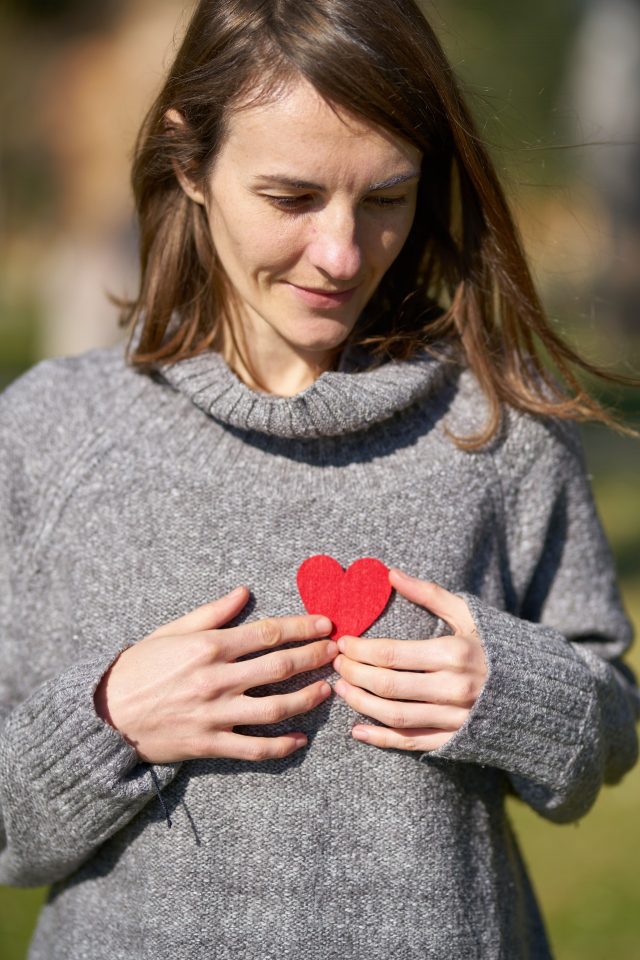
The use of stimulants can actually accelerate the aging process and wreak havoc to your physical and mental health.
Stimulant drugs wreak absolute havoc on the body, particularly the heart. According to the study, these drugs speed up a user's cardiovascular system's aging process compared to the rest of the population. A team of researchers at the University of Western Australia published their findings on February 9, 2017, in the online Journal of Asia.
The study sampled 713 participants in their 30s and 40s attending a clinic for drug abuse from 2006-2011. It measured the stiffness of the arteries of all participants using radial artery pulse tonometry. Arteries –blood vessels that supply oxygen to the heart – tend to harden with age.
Each participant was asked about their drug use and categorized into one of four groups. There were 483 nonsmokers, 107 tobacco smokers, 68 methadone users, and 55 amphetamine users in the four groups. Many amphetamine users had used it within the past week and more than 50% just the previous day.
Of all the four groups, the heart system of amphetamine users was aging faster than that of methadone users and smokers. This was both about their real chronological age and over time. The results stayed the same, even after considering other cardiovascular risk factors like cholesterol levels and weight.
Patients with a history of severe anxiety, agitation, glaucoma, or a personal or family history of Tourette syndrome or tics should not use Adderall. Those with severe heart problems or congenital heart defects should also not use stimulants because it might cause sudden death. Such patients should notify their doctors about any history of heart rhythm disorder, heart disease, heart attacks, coronary artery disease, mental health disorder, high blood pressure, and seizure disorders.
It’s normal for minors to feel anxious or worried from time to time. It happens when they move to a new area or school or before a game and so on. But for some minors, anxiety affects their thoughts and behavior every day, interfering with their home, social, and school life. In this case, a professional may prescribe anxiety medication to help the minor overcome the problem.
Anti-anxiety medications influence the body and brain to lower the symptoms of anxiety, like fear, worry, and panic attacks. These drugs don’t cure anxiety disorders. They only help to manage the symptoms.
Different anti-anxiety medications exist. The doctor prescribes one depending on the type of anxiety disorder present – whether it’s PTSD, separation anxiety, phobias, panic disorder, or generalized anxiety. They may also consider other medications that the minor is taking and whether the minor has co-existing medical conditions.
Anti-anxiety drugs do a great job of relieving the symptoms. But there are concerns as people report feeling emotional inertness. Some say they feel a loss of motivation or less empathy for others. Others say they are less able to cry or laugh even when appropriate or being unable to respond with the same level of enjoyment as they normally would. But surprisingly, not everyone is concerned about this. In a study of 819 individuals, 38% termed the blunting as a positive outcome of treatment. 37% regarded it as a negative.

Anxiety may affect people differently. The drugs doctor prescribe may only temporarily numb the emotional responses of the patient.
People who viewed the emotional blunting negatively are those with more severe symptoms. And as it turns out, the severity of anxiety before medication is directly proportional to the severity of the emotional blunting during treatment. But the good thing is that the blunting usually goes away when one stops using the anti-anxiety drugs.
Anxiety affects many aspects of a minor’s life. Irrespective of how hard they try, their minds wander into different places. One may experience more physical symptoms like digestive problems, upset stomach, constant uneasiness, sweaty palms, bouncing legs, or heart palpitations. Depending on the type of disorder, they may also experience shaking, a sense of unreality, avoidance of social situations, dizziness, specific fears, etc.
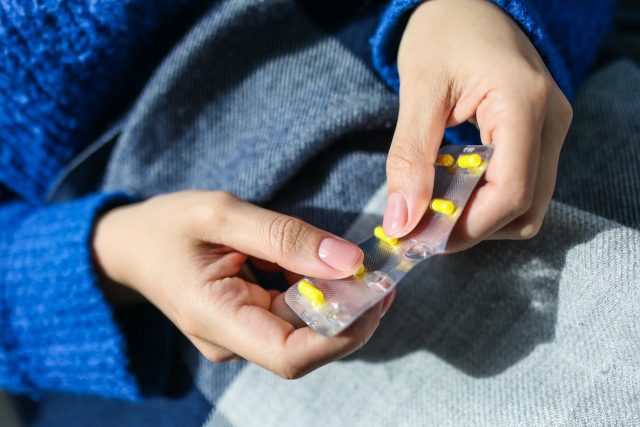
Taking anti-anxiety meds on a daily basis can easily build up a tolerance and lead towards an addiction. Many may even self-medicate with other drugs, like alcohol or opiates.
One of the most glaring effects of anxiety drugs is prescription drug abuse. Tolerance leads to more users, which leads to addiction. Studies show a close link between anxiety and substance abuse. Many young people who struggle with mental conditions like social anxiety disorder also end up with substance use disorder. Like any other alcohol or drug problem, the minor will need to go through a medical detox and comprehensive addiction treatment to regain control of their lives.
Sometimes, the anxiety drugs go beyond enhancing mood and make the minor feel too little emotion. Some report feeling as though they have lost the richness of day-to-day life. The drugs are designed to boost the brain’s hormones that are responsible for scaling down uncomfortable moods. But this reduction can be experienced as a “dulling” or “blunting” of emotions. So, one doesn’t smile at a happy ending in a movie or laugh with the same enthusiasm. They may feel apathetic and not have the same excitement when doing the things they enjoy, like swimming or singing.
Emotional blunting is where the emotions and feelings are dulled, so the person neither feels up nor down. They simply feel “blah.” And while this doesn’t happen to everyone, studies reveal that between 46% and 71% of people using anti-anxiety drugs have experienced emotional blunting at some point.
Unfortunately, when complacency happens in children, they may have a hard time:
Prescription medications do a great job at relieving symptoms of anxiety. However, they are not a miracle cure or a permanent fix. According to the American Academy of Family Physician, there’s little evidence that benzodiazepines retain their therapeutic effect after four to six months of regular use. So it might be a good idea to discontinue them once the desired effect is achieved.

Drug dependence can quickly turn into an addiction. Many who are prescribed anti-anxiety medications or antidepressants will develop a tolerance to the drugs and they might move on to other illicit substances.
When the symptoms of anxiety improve after starting an anti-anxiety drug, doctors may still prescribe it to prevent symptoms from returning. In some cases, they may increase the dosage to maintain the cycle of tolerance and dependence.
Physical tolerance happens as the brain adapts to the way the anti-anxiety drug alters its chemical composition and how the neurotransmitters send and receive messages. The National Institute on Drug Abuse says that tolerance occurs when regular doses of a drug seize to have the same effect as they once did. So the person will need to elevate their dosage to get a similar outcome.
When a minor begins to take anxiety medications, he or she’s likely to feel at ease from anxiety, panic, and stress. Their muscle tension will relax as the blood pressure, heart rate, and body temperature goes down. But when they develop tolerance, they become prone to drug abuse, which in turn increases drug dependence and the chances of addiction. They may also experience a sort of “blah” general outlook on life.
Tolerance, dependence, and addiction can be resolved with a holistic drug treatment program. Some experts cite benzodiazepines as one of the hardest drugs to quit. Others in the list of hard-to-quit drugs include alcohol, cocaine, meth, heroin & opioid drugs, and nicotine. This explains why comprehensive treatment is critical in cases of abused prescriptions.
Have you ever wondered why some addiction patients act with no thought of consequences? Like they run into a friend in town and accept a sudden invitation to get high when they have a job interview? Or they take part in pathological gambling despite the well-known risks of doing so? What really makes an addict so impulsive?
As it turns out, most people who are struggling with substance abuse act on impulse. So, this means many have trouble controlling their behaviors or emotions. Impulse disorder could be a sign of an underlying problem, like a mental health issue or other personality disorders.
In this article, we will look at the things that make addicts impulsive and the treatments that can help them. But first, let’s understand what an impulse disorder is.

Many addicts also struggle with their mental health. Co-occurring disorders are common amongst people who are prone to alcohol and drug addiction.
An addict with impulsive behavior finds it hard to resist the sudden desire to do something that’s contrary to the societal norms. They may do so quickly, repeatedly, and with no consideration of the consequences.

Irrational, impulsive behavior is a common trait amongst some people whoo struggle with addiction.
Acting on impulse is not a bad thing. It can be a motivating force behind the artistic genius. For instance, some incredible music, books, and art come out of impulsive action. But most addiction patients are impulsive often, sometimes multiple times in a day.
While the cause of impulsiveness is not always evident, studies show that it may have something to do with the prefrontal lobe. According to this study, the prefrontal cortex is responsible for higher-order functions. These functions include conscious thought, spatial learning, decision-making, and judgment.
Addiction negatively affects this part of the brain and alters its functioning. So, someone who’s dependent on drugs or alcohol might be unable to make rational decisions or override impulsive urges. So, they end up acting on impulse without thinking, which is not usually in their best interest.
The ability to resist impulse urges allows us to function well in society. It keeps us from danger by enabling us to consider the outcomes of our actions. But when that part of the brain is no longer functioning well, we become susceptible to impulse actions.
Addiction causes changes that promoted impulsive behaviors. So, the addict desires to only live in the present moment with no regard for the future.

If you are struggling with addiction, your life choices typically revolve around one thing: getting your next fix.
Impulse behavior is an immediate factor between ADHD and addictive disorders. According to one study, both impulsive acts and impulsive choices are observed in ADHD and addiction disorder. Experts believe that there’s a strong link between ADHD and addiction and that many individuals with ADHD often turn to alcohol and drugs.
Different studies have shown that people with ADHD have higher levels of impulsive and hyperactive behaviors. That’s why:
Again, those with ADHD usually turn to substances. While there isn’t a clear reason why that’s the case, experts believe that these patients have problems regulating neurotransmitters like norepinephrine and dopamine. But it could also be that they turn to alcohol or drugs as a way to cope with ADHD symptoms.
It is especially challenging for adults with undiagnosed or untreated ADHD. One expert matched the situation to playing with an invisible fire and wondering why the hands are burning.
Impulse behavior is a hallmark of BPD, a debilitating personality disorder that distorts a person’s self-perception. BPD patients are seen as highly dependent, manipulative, and dramatic. However, mental health experts say that these behaviors arise as a dysfunctional way to deal with emotional pain and overwhelming fear.
Patients with borderline personality disorder often suffer from insecurity, anxiety, and low self-esteem. They also have substance abuse issues. Alcohol, in particular, makes them comfortable when they are in the company of others.

Many people with BPD consume alcohol, often to excess to mask their insecurity in social situations.
Alcohol dependent individuals with BPD express a wide-range of impulsive behaviors. These include:
IED is an impulse-control disorder that’s characterized by the inability to resist impulses. This may lead to property destruction, serious assaults and frequent verbal aggression in the form of temper tantrums.
The condition results from a combination of environmental, biological, and genetic factors. Many IED patients grew up in families where verbal and physical abuse and explosive behaviors were common.
According to the National Institute of Mental Health, IED starts in adolescence and affects someone throughout their lives. It’s one of the many impulse control disorders where a person is unable to control aggressive behaviors that violate other people’s rights.
An episode of intermittent explosive disorder could manifest as:
In addition to substance use treatment, a patient needs treatment for the specific impulsive behavior condition. One general approach is behavioral therapy, where one learns to work through and better handle situations that trigger impulsivity.

A combination of therapy and medication may be necessary to help people with impulsive behavioral disorders.
Healthcare providers may use several medications to treat impulse-related severe conditions. They recommend a dopamine agonist, opioid antagonists, mood stabilizers, and antidepressants for treatment. Antidepressants like selective serotonin reuptake inhibitors can also help treat IED and other impulse-control disorders. Methylphenidate or amphetamine and dextroamphetamine treat ADHD.
Family therapy is also an effective treatment for impulse behavior. This is especially true since the roots of severe impulsive behaviors may stem from the family environment. And in some cases, the impulsive behavior also hurts other members of the family. Family therapy can help address both of these issues.
When a loved one goes through the tough recovery journey and comes out on the other side sober and clean, there’s a lot to feel good about. However, the joy almost always comes with the fear of relapsing. After winning the difficult battle against substance abuse, it can be heart-wrenching to imaging that the victory may not last forever. But the reality is that the recovery from addiction seldom goes as planned. Many patients slide back to their old habits of using, so much so that relapse (although dangerous) is considered a normal part of the recovery journey. If you or a loved one has relapsed recently, please understand, it is not a failure.
No matter how diligently one pursues their recovery or how committed they are to lifelong sobriety, there’s a chance that they will relapse at some point. According to the National Institute on Drug Abuse, the relapse rates for addiction mimic those of other chronic diseases like asthma, hypertension, and diabetes.
According to the study, relapse rates for people treated for substance use disorders are 40-60%, which can be compared with those for people treated with asthma, 50-70%, and hypertension, 50-70%. Understanding how relapse happens is critical to preventing relapse because the patient learns to identify the signs (or triggers) and course-correct before they begin using again.
Relapse is a normal part of recovery from drug or alcohol addiction. It occurs when symptoms of a condition reappear after a time with no symptoms. According to the Marlatt and Gordon model, relapse starts with a high-risk situation that’s accompanied by a poor coping response. When this happens, the patient experiences decreased self-efficacy and becomes more prone to a lapse, or one-time use of the substance. For some patients, a lapse comes with a sense of failure or guilt about using again. They feel that they’ve broken some personal expectation or moral law, and assume that alcohol or drugs will lift the negative feelings.

If you or a loved one has relapsed recently, know that you are not alone. There should be no shame associated with a relapse. There are many people who understand what you're going through and they're willing to help.
Unfortunately, when relapse happens, many people – especially those around the patient – assume that treatment did not work, or that the patient lacks the willpower to stay sober. But a successful treatment for substance use disorder needs continual assessment and modification. Relapses along the way don’t indicate failure; they only signify that addiction treatment needs to be adjusted, changed, or reinstated.
When a person with substance use disorder slips back to their old habits, it doesn’t mean they failed. It means they have to try again and continue to practice healthy habits. In case the relapse was an isolated incident, and the patient is committed to adjusting or examining their recovery care plan, they may not need to go to an inpatient drug rehab. They may only need a supervised medical detox to overcome withdrawal. But if the patient has relapsed full swing, they’ll benefit more by going back into strict treatment programs.
Relapse comes with an increased risk of overdose. When patients abuse substances for a prolonged period, they develop tolerance, meaning they no longer respond to the substance in the way they did in the beginning. So, it takes a higher dose of the substance to get the same effect as when they first used it. Tolerance reduces with treatment.
If the recovering patient relapses and uses the same dose as they did before treatment, they are at a very high risk overdosing, which can be fatal.
Finding a safe living environment that removes access to substance and negative influences is the best way to address relapse. Long-term inpatient treatment facilities provide residential treatment options for relapsing patients who need intensive levels of substance use treatment. This extended care options are often provided outside of hospital settings and run anywhere from six months to 12 months or more. And while some treatment centers have structured length of stay, others only allow the patient to graduate when they are ready to do so.
A high-intensity rehab program may be the best option for patients experiencing severe addiction, chronic relapses, among other situations that can benefit from prolonged treatment. Most long-term inpatient rehabilitation programs focus on creating a safe and steady environment that encourages sober living. It helps patients to heal from social damage resulting from addiction. Some addiction treatment programs are better than others. Do some research on ethical drug rehab facilities before you make the final decision.
Structure is one of the biggest benefits of residential care. Relapse can consume a patient’s life, create instability in their family, job, or school, and deplete their self-worth. The robust structure of long-term treatment facilities can help a patient regain a sense of responsibility, confidence, and ability to plan and carry out vital goals that support sobriety.

Finding the right kind of help is crucial in maintaining sobriety. There are many different options out there.
Throughout the course of treatment, the patient’s day will include activities and care that are designed to help them achieve their goals. Patients have 24-hours access to support from fellow peers and trained addiction specialists. They have time to interact, meditate, and even join peer support meetings. Patients can also be part of self-help groups, which play a significant role in building accountability, confidence, inspiration, and a sense of acceptance.
Long-term centers approach treatment from the idea that no patient is similar to another, and will, therefore, have different paces of recovery and coping. Often, these facilities will adjust the length of treatment according to how well a patient is recovering. Those who have a hard time may have to spend more time in the facility – but the result is often worth it.
Most inpatient treatment centers provide incredible support for physical health, particularly when it intertwines with mental health. Patients can expect exercise, nutritional therapy, and information on these two influences the mood and overall health. Since the aim of in-house therapy is to arm patients with tools to manage their happiness and quality of life without alcohol or drugs, this information is critical in long-term recovery.
There’s also the aspect of easy access to transformative treatments and therapies while in long-term addiction facilities. These programs give patients enough time to learn and be able to cope with exposure to drugs, stress, and other triggers without a likely relapse.

The road to recovery may be a long one. Your journey will have some bumps along the way. Stay the course.
As you may have realized from this article, addiction treatment is not all about ending addiction. It involves helping the patient resolve the complex underlying issues (stress, mental health issues, peer pressure, unstable home) that caused the addiction in the first place. It’s about helping the patient uncover the true meaning and purpose in their life, and regain a sense of fun and joy devoid of drugs or alcohol.
Long-term residential drug treatment centers or therapeutic facilities, as they are commonly referred to, are ideal for relapsing patients. Unlike short-term rehab, long-term rehab continues treatment until the patient is ready to carry on – when they’re stable and able to fit back into society. These facilities help relapsing patients change negative patterns of behavior and thinking and develop strategies, skills, and techniques they require to combat cravings, reduce stress and cope with other powerful forces to enhance the chances of successful recovery. These centers also address disorders (depression, schizophrenia, bipolar, anxiety or conduct disorder, etc.), that often co-occur with addiction to treat the patient holistically.
Several studies have shown a strong correlation between substance abuse and mental illness. According to the National Institute on Drug Abuse, many people with mental health conditions develop substance use disorders (SUD), and vice versa. The incidences tend to co-occur (also called comorbidity or dual diagnosis) more often than what could be attributed to chance.
While mental health issues don’t cause drug addiction or vice versa; they can exacerbate the symptoms. It is not uncommon for individuals to self-medicate a mental illness with alcohol or drugs. Conversely, alcohol and drugs can lead to psychological issues like paranoia, delusions, anxiety, and depression or worsen existing psychiatric conditions. So, individuals diagnosed with anxiety or mood disorders are highly likely to suffer from drug abuse disorder compared with respondents in general. The same holds for those diagnosed with drug disorders as they are likely to suffer from mental disorders like anxiety or mood disorders, etc.
Please don’t take our word for it
A past NIH study showed that certain protective factors don’t exist among those with severe mental illness. Individuals with bipolar disorder or schizophrenia, for instance, have a higher risk for drug use. Multiple national population surveys suggest that about 50% of those who experience substance use disorder will also experience mental illness at some point in their lives, and vice versa.

Mental health issues and substance abuse go hand-in-hand for many people of all ages, and backgrounds.
Other reports not only support that these two disorders are connected, but also emphasize that drug use in itself is a mental illness. This is because drug use changes the brain in ways that affect the person’s hierarchy of desires and needs. The resulting compulsive behavior that overpowers one’s ability to control impulses despite the negative outcome is similar to other mental illnesses.
With that in mind, let’s now look at types of mental disorders that increase drug use.
Anxiety disorder is one of the most common mental illnesses in the United States, affecting 40 million (or 18.1%) adults age 18 and over annually. But anxiety doesn’t affect adults alone. According to the Anxiety and Depression Association of America (ADAA), these disorders affect 25.1% of children aged 13-18. When the anxiety goes untreated, these children may perform poorly, become distant socially, and abuse substances.
Comorbidity is common with substance abuse and anxiety. About 20% of individuals with mood disorders or anxiety have substance use problems. The same number of people with drug problems suffer from anxiety and mood disorders. A mental health professional told ADAA that anxiety disorder often travels in the company of drug or alcohol abuse, as those with a social anxiety disorder might abuse substances to feel comfortable and less restricted in social settings. But it robs them of knowing when to stop or accepting that they have an underlying problem that needs therapy and treatment and not substance to overcome the fear. Eventually, the drugs that serve as temporary solace (whether illicit drugs, prescription drugs, or simply stimulants) can also trigger anxiety.
Individuals with bipolar disorder experience radical mood swings that can last for days or weeks in a row. Depending on the severity, these episodes may occur as little as a few times in a year or as often as several times in a week. In one study of people with bipolar disorders, about 60% had some history of substance misuse. And while it’s not clear why this disorder makes people more prone to alcohol and drug abuse, different studies try to connect the dots.
Some experts believe that inherited traits play a role in linking bipolar disorder to alcoholism or drug abuse. In a Mayo Clinic post, one doctor suggests that the genetic differences affect brain chemistry linked to bipolar disorder. He further noted that the same traits might also influence how the brain responds to drugs and alcohol, exacerbating the risk of substance use disorders. But there’s also the aspect of mania – where the upswing from depression lowers judgment, leading to increased substance abuse.
Other experts suggest that addiction arises when the patient uses drugs or alcohol to ease anxiety, depression, and other bipolar-related symptoms. As discussed above, abusing substances in the name of relieving the symptoms only worsens the situation. Frequent drug use can change the brain’s reward system. Over time, this mind-altering changes lead to compulsive drug-seeking behavior. Drug use can also cause brain changes that lead to bipolar disorder.

Many adults battle depression and other types of mental health issues on a daily basis.
Depression is another mental disorder that frequently co-occurs with drug use. Like other mental illnesses, the relationship between drug use and depression disorders is bi-directional. Depressed individuals may abuse substances to uplift their mood or escape from feelings of despair or guilt. However, substances like alcohol (which is a depressant) can increase the feelings of fatigue, lethargy, hopelessness, or sadness. On the other hand, people can feel depressed once the effects of alcohol or drugs wear off, or when they struggle to deal with the way addiction has affected their lives.
Depression is like a gateway to substance abuse. Approximately one-third of those with major depression go on to have alcoholism problems. People struggling with depression often have a hard time giving up drugs or alcohol because it can worsen depression. Some who quit cold turkey are bombarded with withdrawal symptoms that are difficult to bear, causing them to relapse.
Schizophrenia is a severe mental illness in which people interpret reality abnormally. This brain disorder makes it hard for people to distinguish the imaginary from reality, affecting about 1% of all Americans, approximately two million adults. Patients often are unable to respond to different social situations in an appropriate emotional way. This leads to strained relationships with family and friends.
An estimated 50% of those suffering from the condition have a history of substance misuse. Often, these people engage in alcohol or drug abuse to self-medicate or relieve feelings of depression and anxiety. Drug and alcohol are environmental triggers for schizophrenia. A person with existing genetic risk factors for the condition can activate it after prolonged substance abuse. Using illicit drugs like cocaine, amphetamines, or marijuana heightens schizophrenia symptoms or make them worse.
Schizophrenia and substance abuse disorders have similar symptoms, which explain why people often confuse one for the other. Unfortunately, this only makes it even harder to diagnose the condition or co-occurring illnesses.
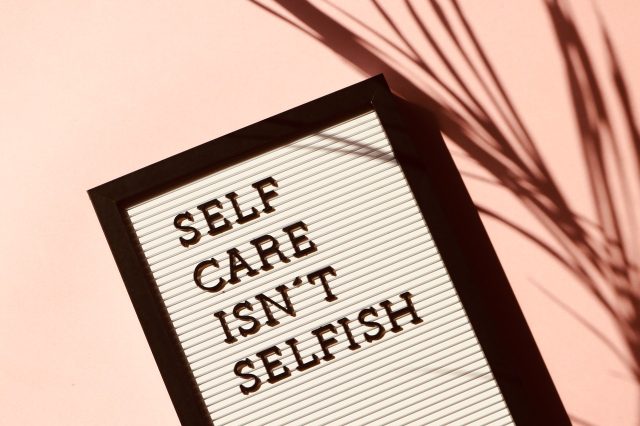
Self care is important when dealing with a dual-diagnosis or co-occurring mental disorder.
It suffices to say that mental disorders and drug use are two sides of the same coin – you cannot address one and ignore the other and expect a successful outcome. That’s why dual diagnosis patients enroll in integrated treatment programs that address both problems simultaneously. Otherwise, untreated mental disorder symptoms can cause the patient to be unable to remain sober and clean. Untreated drug use, on the other hand, can make mental disorder treatment ineffective.
Drug implants like Naltrexone and Buprenorphine are designed to block the effects of opioids for weeks or even months. But, are these drugs more like a magic bullet, or dangerous experiment?
Well, if you or your loved one is struggling with an addiction problem, you likely are trying to find ways to put the issue behind you. After all, drug addiction is a significant concern and has the potential to impact your mental, physical, emotional, and financial wellness.
So, like any other person on the receiving end, you may be open to any treatment as long as it helps you regain control. However, you should be smart in your approach to ensure you make an informed decision.
In this article, we will look at drug implants, how they work, their upsides and downsides, efficacy, FDA approval, and everything else that you need to know about them.
Addiction is a disease that can’t be cured. But it can be managed successfully with abstinence. As we mentioned earlier, addiction can have significant mental and physical impacts. And without quality drug rehabilitation, the problem is likely to progress.
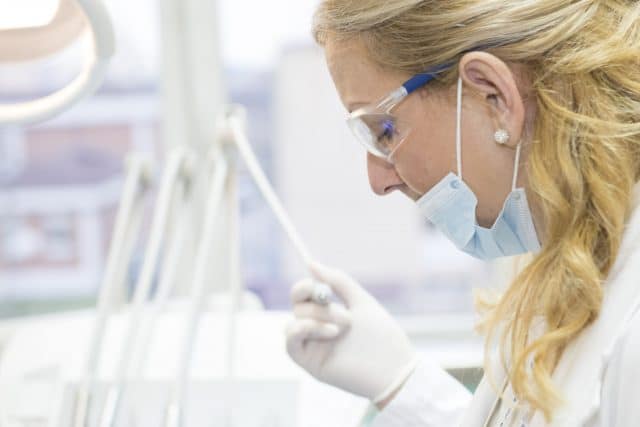
Medical science has advanced the treatment of alcohol and drug addiction. New discoveries being made on an almost daily basis.
Addiction treatments have evolved widely over the last decades. Traditional programs like the abstinence or 12 Steps are no longer the only options. Today, patients can opt for medical intervention as part of treatment.
This explains why more and more patients are now getting holistic care that sometimes includes MAT (Medically Assisted Treatment) like the Naltrexone or Buprenorphine implant. These treatments are effective in treating opioid and alcohol addiction, helping to reduce and mitigate painful withdrawal symptoms. In addition to blocking the effects of addictive substances on the body, they can prevent relapse and promote abstinence.
Buprenorphine has been the “go-to” option for addressing what has become the worst opioid epidemic in America. According to one study published on Addiction Center, the sale of opioid painkillers increased by 300% since 1999. The study further revealed that about 15 million Americans and 2.1 million Americans have alcohol and opioid use disorder.
Going by these numbers, the situation is alarming.
Probuphine, or “bupe” who’s efficacy placed it on the top spot as “the wonder drug,” binds and blocks the opioid receptors in the brain. So, the patient cannot experience the effects of drugs like hydrocodone, morphine, or heroin. And since the user cannot experience the comfort, euphoria, or pleasure associated with these drugs, he or she won’t have the desire to use them.
Naltrexone is an opioid receptor antagonist that’s used to treat both opioid and alcohol addiction. It disrupts the brain pathways that release dopamine and endorphins (which are the ‘feel-good’ hormones). This drug is often prescribed orally and needs to be taken daily to minimize the symptoms linked to opiate withdrawal and recovery.
Medically assisted treatments are affordable and have shown to help individuals recover from opioid and alcohol disorders, enhance social functioning, minimize fatal overdoses, reduce the risk of transmitting infectious diseases, and reduce criminal activity.

A long-term struggle with addiction can take you or your loved ones to horrible places you never thought were possible.
Drug implants are designed to serve the same purpose as their pill and injection counterparts – to treat addiction. The implant blocks opiates for around 2-6 months; a depot injection permitted for medical use in Russia and the US lasts about a month. This prevents the need to take medicine daily, theoretically overcoming the main downside of oral drugs – that individuals often stop taking the tablets and fall back to using the substance.
While one month may not seem like adequate time, it might be an invaluable extension for different interventions suitable to a subset group of patients depending on their circumstances and characteristics – especially those who are prepared to quit using.
Depot injections and implants of Naltrexone are yet to be licensed for medical use in the UK and Australia. Although they can be prescribed, both the doctor and patient must assume responsibility for using the drug, which hasn’t met the efficacy and safety standards involved in licensing.
The United States FDA approves Buprenorphine implant as a treatment of opioid addiction. The medical rods are meant to offer a continuous release of a low dose of the drug over six months. Ideal candidates for implant technology should be clinically stable on other approved buprenorphine treatment systems like films or tablets for at least six months.
Probuphine, a newly approved form of Buprenorphine, is implanted under the skin in the upper arm and removed once the treatment is over. However, most treatment centers include it as part of a holistic treatment plan that’s customized to the patient.
Drug implants offer vast benefits when compared to other dosage forms. For starters, these devices allow the drug to be administered at a specific site where it is most needed. Additionally, the implants allow for a significantly lower dosage of medicines, which can lower potential side effects.
There is also the aspect of sustained-release, which cuts out the risk of drug delivery outside of the therapeutic window. Last but not least, drug implants ensure patient compliance since the regime is generally less daunting than weekly injections or taking pills daily.

Drug implants can be an easy way to help control withdrawal symptoms and cravings, making a relapse less likely.
One of the significant downsides of implantation drugs is their invasive nature. Since they are placed under the skin, there is a small chance of surgery-related complications. And while unlikely, there is also the risk of device failure and biocompatibility issues.
Drug implants can be effective in minimizing cravings and preventing relapse. Unlike oral medications that come with complications of forgetting or failing to take the daily dose, an implant lasts long and ensures a sustained release.
Although more research is required to substantiate the findings, different studies reveal that drug implants may help stop the addiction. For instance, one study showed that Naltrexone implants, which block opiate-type drugs for months, helped addicts in Norway prevent relapse and overdoses after detox.
Another 2014 systemic review analyzed different study results from nine studies, matching Naltrexone implant to oral Naltrexone or placebo and established that the implants were more effective than both oral Naltrexone and placebo.
A lot has changed in the clubbing world. Years back, baggy cotton tees and trousers were the "in" thing. But today, ravers rock designer clothes and statement pieces. Well, maybe it’s because the crowd is getting younger, and selfies are at the center stage of it all. So are club drugs.
Unlike decades ago when clubbing was all about music and alcohol, teens and young adults of the day now have easy access to club drugs. Most of them assume that these substances are harmless and good for fun. However, as you will notice in this article, club drugs are anything but “fun drugs.”
As the name suggests, club drugs are commonly found at parties, concerts, night dance clubs, and bars. They are used in these settings to improve the experience or influence other people’s behaviors. Most forms of these drugs are illegal and can produce a range of unwanted effects, including serious injury, illness, or even death. These effects can result from repeated use, one-time use, or use with other substances like alcohol.

Taking drugs at a party is almost a rite of passage for many young adults.
Club drugs go by a range of slang names. Unless you have inside knowledge, you might easily mistake a name for another thing. As an example, what comes to your mind when you hear the words “Love Biscuit” or “rolldogs” or “Scooby Snacks?” All these names are aliases for ecstasy. Other common club drugs include; GHB, Rohypnol, MDMA, ecstasy, methamphetamine, ketamine, and LSD.
Hallucinogens: These are a class of drugs that distort one’s perception of reality. Hallucinogens cause a person to hear, see, or feel things that are not real.
Stimulants: Stimulants increase activity in the body by speeding up the messages between the body and brain. They make the user feel more alert, awake, energetic, and confident.
Depressants: Depressants lower neurotransmission levels, thus reducing stimulation or arousal in different parts of the body. These drugs can slow brain activity.
Gamma-hydroxybutyrate (GHB)
GHB (aka Georgia Home Boy, date rape drug, liquid ecstasy, or G) is a colorless and odorless drug that’s used for both date rape and recreational reasons. The central nervous system depressant is said to promote sex drive, tranquility, and euphoria, and is often added to alcohol to increase its effects. This is why perpetrators use GHB to drug victims before a sexual assault and why it is a good idea to never leave your drink unattended.

Rohypnol and GHB are commonly referred to as "date rape drugs". They are odorless and flavorless, so they can be spiked in a drink without most people realizing it.
Rohypnol
Rohypnol (aka Roche or roofies) is an odorless and tasteless drug that readily dissolves in carbonated drinks. It is available in an olive-green or white pill and is often sold in the manufacturer’s bubble. Users crush the pill into powder form and either smoke, snort, sprinkle on marijuana, inject or dissolve it in a drink. Rohypnol is one of the most heavily used rape drugs because they either make the victim susceptible to suggestion or put them in an unconscious state.
Ketamine
Ketamine (special K or K) is a central nervous system sedative and an anesthetic that causes loss of memory, learning ability and attention span when taken in small amounts. Higher doses can cause depression, amnesia, delirium, severe breathing problems, or high blood pressure.
3, 4-methylenedioxy-methamphetamine (MDMA)
MDMA (aka Molly, ecstasy, Adam, or X) is a synthetic drug that alters perception and mood. It has similar chemical properties as stimulants and produces feelings of pleasure, increased energy, distorted sensory, emotional warmth, and time perception. People take it as a tablet or capsule form, though some snort the powder or swallow it in liquid form. Molly (short for molecular, or molecule) refers to the perceived “pure” crystal powder form of MDMA. However, vendors often disguise and sell bath salts (synthetic cathinones) as Molly.

While club drugs may seem fun at the time, there are numerous, negative side effects of these drugs. They are also often laced with other, more dangerous drugs like Fentanyl or meth.
Methamphetamine
Methamphetamine (aka meth, crystal, ice, fire, speed) is used to boost one’s energy levels by speeding the body’s processes. It’s a highly addictive stimulant that alters the central nervous system. People can take meth by snorting, swallowing, smoking, and injection. And since the ”high” from the drug spikes and fades quickly, people usually take repeated doses.
As discussed earlier, date-rape drugs make it easier for perpetrators to rape or sexually assault unsuspecting victims. The victim - after consuming the rape drugs - may feel confused. He or she may have trouble defending themselves and not be able to remember what transpired later on. “Date rape” does not necessarily happen on a date – and the perpetrator might be a stranger or even someone close to the victim.
It is not uncommon for one to wake up in a stranger’s bed with no memory of how they got there. In worst-case scenarios, they may wake up by the roadside or behind a building without the slightest idea of what happened. Keep in mind that both men and women are equally at risk of sexual assault, theft, and so on. That’s why anyone who plans to attend clubs, parties, or bars should understand ways to avoid falling prey.

Always keep a close eye on your beverage. You could easily be "roofiied" without your knowledge if someone is able to slip some drugs into your drink.
A 2019 study by the National Institute on Drug Abuse revealed that 3.6% and 5.6% of 12th graders in the US had used LSD in the past year or their lifetime, respectively. The study indicated that 2.2% of 12th graders had used MDMA in 2018, while 3.3% had in their lifetime.
NIDA’s national survey also accessed the trends in the prevalence of different drugs for ages 12 and older and established that 11% of young people aged 26 and older have used LSD in their lifetime. 7.5% and 6.5% in the same age bracket had used MDMA and methamphetamine in their lifetime.
Side effects can be short or long term, and vary from person to person. Types of drugs, amount used, mixing different drugs and personal medical conditions also influence the kind of effects that one experiences. Health problems may appear 10-20 minutes after use, and include:
Club drugs (depressants, stimulants, methamphetamines, and/or hallucinogens) affect the central nervous system and the brain. They can make someone do things that they would not do under normal circumstances and they are very popular in the music festival culture. They also pose potential health, legal, emotional and financial ramifications. That’s why it’s wise to refrain from using, and also protect yourself from possible spiking.
Does this sound familiar?
You call up all your friends and loved ones to inform them about your plans to quit using drugs or alcohol.
You are so sure about it and believe that nothing can get in the way.
So you quit cold turkey, with no help. And just as everything seems to be working out perfectly, the unexpected happens – you slip back in and start using again.
If this is familiar, you are not alone. 19.7 million American adults aged 12+ years struggled with substance use disorder in 2017. This is according to the National Survey on Drug Use Health (NSDUH). Of this number, 38% battled an illicit drug use disorder.

Millions of Americans struggle with addiction. You are not alone. Help is available.
The reason you keep going back is that drug addiction is not just a habit. It is a brain disease. When you use drugs for a prolonged period of time, it can change the way nerve receptors work in your brain. Addiction changes the way critical parts of the brain function, so much that you have a hard time quitting drugs – even if you want to. According to brain science research, addiction:
Addictive drugs alter the way the brain regulates moods and processes emotions. Most of these changes flood the brain with serotonin and dopamine neurotransmitters that create an artificial feeling of “high,” or pleasure. This is one of the reasons you find it hard to choose to do the right thing. The other reason is the issue of withdrawal symptoms.
Drug withdrawal is a group of symptoms that happen when you discontinue or reduce the intake of recreational or meditational drugs abruptly. To experience withdrawal syndrome, you must have first developed a form of drug dependence.
If you become physically sick after quitting, it may be an indication that you are physically dependent on the drug. This is usually your body’s way of responding to the absence of the substance. You may also become dependent on drugs or alcohol to prevent withdrawal symptoms or pain.

While every person experiences it differently, withdrawal symptoms can seem unbearable for some.
Note that the severity and nature of the withdrawal symptoms that you experience will vary based on the level of substance dependency along with other factors like:
As an example, a person who takes large dosages of opiate for years through injection and has a family history and/or an underlying mental health problem will experience more extended withdrawal periods and more severe symptoms than one who has been using smaller doses for months. Although the effects and severity may differ, one thing is sure; withdrawal symptoms will be present as long as dependence is formed.
Drug withdrawal symptoms differ based on a range of aspects, as discussed above. Some drugs like methamphetamine, cocaine, and prescription ADHD meds may have far-reaching emotional withdrawal symptoms. Others, like prescription drugs and heroin, cause extremely uncomfortable physical withdrawal symptoms that mirror flu-like symptoms.
We cannot talk about drug withdrawal symptoms without mentioning alcohol. After all, acute alcohol withdrawal is amongst the most dangerous withdrawal periods of all substances and drugs and can cause potentially life-threatening symptoms. For this reason alone, the process must be approached with care or be done under medical supervision.
Benzodiazepines (Ativan and Valium) can also have adverse withdrawal symptoms like alcohol. The only difference is that alcohol symptoms appear hours after the last drink and subside within a week. Benzodiazepines, on the other hand, take up to a month. Like alcohol, benzodiazepine withdrawal symptoms include hallucination, elevated heart rate, and blood pressure, delirium, and seizures.
Opiate (heroin, OxyContin or hydrocodone) withdrawal symptoms aren’t as severe as those from alcohol and benzodiazepines but can cause muscle cramps, aches, runny nose, sleeplessness, nausea, and vomiting. Opiate withdrawal symptoms are often flu-like.
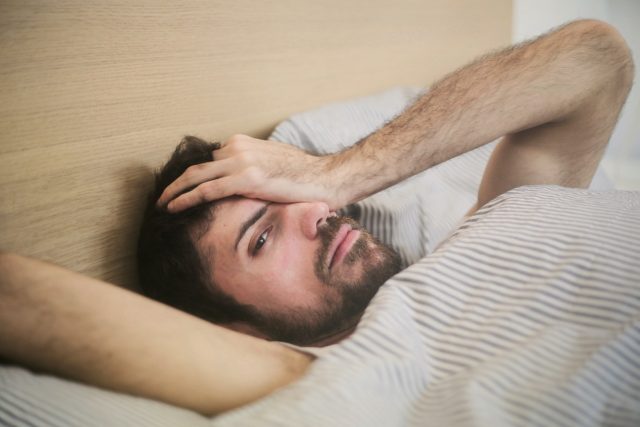
Many addicts report flu-like symptoms from their experiences of withdrawal.
Don’t attempt to quit “cold turkey” after dependence has formed. Evidence shows that this is not the best way to stop. Only a small percentage of patients succeed this way. Besides, the physical aspect of withdrawal is too much to handle alone. Many people who have an opioid addiction end up resuming use to stop the resulting symptoms. So, you should quit gradually with the help of medical professionals. Your symptoms will be managed through a medical detox program as part of a holistic addiction treatment plan.
Withdrawal symptoms can range from mild gastrointestinal upset and nausea to potentially life-threatening seizures. These symptoms often present opposite reactions than those associated with the drug or substance. They include:
The first symptom can appear within 12-24 hours of use and tend to be worse for the first 48-72 hours. However, the symptoms gradually start to decline as your body adapts to the new normal. The whole process can last up to 14 days.

With the right help, addiction recovery is entirely possible. Take the necessary steps and change your life!
Although you can detox privately at home, there are numerous reasons why doing so might not be the best choice. For starters, it may not be safe because you are unsupervised. Remember, issues like violence, injury, psychosis, medical illness, and even threat to self can arise a few hours after drug detox. Besides, at-home drug detox is usually ineffective. So, it is best to get care at a reputable treatment center.
Drug and alcohol detox is the first step in a holistic treatment program that provides all the necessary tools needed for recovery. Detoxification can prevent unpleasant or adverse side effects arising from sudden cessation of use and can help you become abstinent from alcohol or drugs.
Drug detox lasts as long as the withdrawal symptoms are present, and for as long as it takes you to stabilize both mentally and physically. Medical detox aims to stop the abuse of substances and also prepare you for the work that lies ahead on counseling and therapy.
Being caught in the throes of addiction is to be caught in a state where logic, consideration, and reason are thrown out the window in exchange for the pursuit of using. Otherwise, sound individuals will engage in irrational or out-of-character behavior, lying, stealing, cheating, and using any means possible to achieve their end. This is one of the most hurtful symptoms of addiction.
Addicts will sometimes disappear. It could be for a few hours, or it could be months. It is extremely hurtful and worrisome to their loved ones. What do you do if a friend or family member disappears?
Call agency for your town, county, and nearby towns. Ask if the subject has been seen. Suggesting that they could be in trouble. Describe any known associates or hangouts.
There is no time limit to do this, you can file a report immediately and have all law enforcement keeping an eye out for your loved one. The vast majority of missing persons cases are resolved by the missing person themselves within 72 hours. However, there’s the consideration of additional danger for addicts, as their situations are intrinsically more complicated. Give local law enforcement as much information as possible.

Contacting local authorities and filing a missing person report may be necessary to find an addict who has disappeared.
"Be prepared to provide information on the missing person, including birth date or age, physical descriptions, and most importantly, any medical information. Police will also need to know the circumstances surrounding the disappearance and the last location where the missing person had been seen or was known to be. Also, provide any known associates and telephone numbers of persons who know the missing person. Other helpful information that may be provided: cell phone numbers, email addresses, or social network information. When an adult person has been reported missing to police, he or she is entered into a nationwide database; this will assist other law enforcement agencies in finding the missing person."
The above text, taken from the Los Angeles Police Department website, covers some of the information you could provide to make law enforcement’s job easier. Others include what clothing they may have packed to take with them, what kind of vehicles they may drive or have access to (and plate numbers if possible), any known associates or friends that may be helping them, and any present or prior significant others. Additionally, as many recent photographs as you can find will help with the description.
It is by no means a pleasant thought, but contact your local, county, and state coroner’s offices to canvas for your missing addict. A description may help identity a John or Jane Doe that otherwise would be kept in unidentified storage.

Homelessness affects people who are addicted to drugs. Homeless shelters may offer them hope in a dark time.
Acquire a list of homeless shelters in your area, and call them every day. Homeless shelters are often a revolving door of clientele. Over 35% of homeless people have a substance abuse disorder.
The Salvation Army has a missing person program, available here. This program specializes in locating missing adults.
Create a Facebook profile with pictures of the missing individual and post in local area Facebook groups. Raise community awareness by posting flyers everywhere, check your local ordinances first. Notify local church groups and charities, put up posters in bus stops, businesses, restaurants and anywhere else that will allow it.
If your loved one has not been turned up after this searching process, it may be time to hire a private investigator, or “PI.” Here are some guidelines for employing and retaining the services of a Private Investigator.

A private investigator may have more resources to help find your loved one who has disappeared.
In closing, keep heart: the majority of missing persons will show back up on their own within 72 hours. Your addict may stay away longer, but anecdotal evidence dictates the majority of addicts will resurface when they need support from their family. Do the best you can do, and wait.
https://salvationarmysouth.org/ways-we-help/missing-persons/
Inevitably, one of the first questions asked when discussing drug or alcohol rehabilitation programs is, “will my insurance company pay for it?”
If you have employer-provided or otherwise “private” insurance, you must contact your insurer to discover the exact terms under which your insurance covers your recovery journey. However, if you are one of the 12,000,000 (that’s 12 million!) Americans who receive their insurance coverage via the Affordable Care Act exchange (AKA ‘Obamacare’), you are in luck.
Mental and behavioral health services are essential health benefits
All plans must cover:
Your specific behavioral health benefits will depend on your state and the health plan you choose. You’ll see a full list of what each plan covers, including behavioral health benefits, when you compare plans in the Marketplace.
The above text, taken from Healthcare.Gov, shows us that It is a requirement of the Affordable Care Act that providers pay for at least some of your treatment and recovery process. However, that’s not the end of the story.
The majority of plans on the Affordable Care Act exchange are high deductible, meaning you must hit a dollar amount spent per calendar year before you gain the benefit of your insurance coverage.

You can relax, knowing that your mental health needs are covered by your insurance.
Additionally, you will be responsible for a “copay” or “co-insurance” even after you reach this deductible limit. The cap for “max out of pocket” is often quite high for more economically priced plans, so that “copay” will likely be an ongoing part of your recovery process.
However, not all the news is dour. Let’s refer to Healthcare.gov again:
Pre-existing mental and behavioral health conditions are covered, and spending limits aren’t allowed
The pre-existing condition language tells us that the insurer cannot attempt to avoid the responsibility of assisting your recovery journey by stating that your disease arose before you were covered under their policy. The second point states that the insurer cannot make you wait to seek treatment for your sickness - your coverage begins as soon as the policy is in effect. Lastly, they cannot cap their expenditures on your rehabilitation, as opposed to say, limiting your number of counseling sessions.
However, there are more concerns at hand than just financial. To get the treatment you need, we must consider the following:
Depending on the care you need, you may need a referral from a doctor for the care to be covered by insurance. HMO plans often have this requirement, and your PCP (Primary Care Provider) would have to evaluate your situation and provide referrals accordingly for you to have your care covered by your insurance.
PPO plans, on the contrary, will often allow you to simply seek the care you require without having to have your PCP approve it. If you have any questions whatsoever, contact your insurer on the phone number on your card.
Another consideration is the nature of your addiction. Under the ACA, coverage for alcohol, opioids (prescription and otherwise), and recreational drugs is mandatory. However, coverage for other addictions, such as behavioral (for example, a social media addiction, or online gaming addiction) may not be - consult with your doctor and insurance company for clarification.
Medically Assisted Treatment, or MAT, is the use of ‘maintenance’ drugs such as Suboxone and Buprenorphine (or Subutex), combined with various types of therapies to prevent relapses. Some treatment plans are covered by ACA insurance, and some are not. Again, the best way to avoid unexpected financial hardships during your treatment is to consult with your doctor and your insurance company.
When your doctor refers you to a course of treatment, your chart is submitted, along with his or her recommendation, to the insurance company, where their internal adjustors make a decision to cover the claim or deny it. If you are denied the claim, immediately demand a review of the decision. If their denial is especially egregious, they may cave immediately.
If they do not, then your claim is submitted to a doctor employed by the insurance company to decide if the plan is medically necessary. This is what is known as an “Internal Review”. If the insurance-employed doctor upholds the rejection of the claim, do not fret. You should then immediately demand an outside doctor review the claim, in what is known as an “External Review”.

Insurance coverage can help you achieve the healthy lifestyle you know you want.
Some insurers have so-called “Fail First” policies, to where you must have relapsed on a cheaper outpatient program before they will honor a claim for an inpatient program. Outpatient programs are often quite successful, so unless your living situation is untenable in regards to your recovery journey, you may find that these are a better option than going to an inpatient rehabilitation center.
These processes can often be avoided if your referring doctor is familiar with the correct wording and verbiage to use in your chart to impress upon the company the debilitating and time-sensitive nature of your addiction. Your doctor can be a powerful ally if they are experienced in dealing with often stingy insurance companies.
Your ACA plan does cover rehabilitation services. The amount of coverage varies based on your insurance plan. You will likely face up-front costs (your deductible) before your insurance provider steps in. Some types of addiction may not be covered, but major chemical dependencies are (opiates, alcohol, so-called ‘recreational drugs’).
Some providers will require a referral, and some will not. Verify with your doctor and insurance company about what is covered and what is not. If your treatment plan is denied - immediately challenge the denial. If the internal review is denied, challenge again for an external review.
It may seem complicated, but by being proactive and fighting for yourself you have a good chance of getting rehabilitation programs to be covered by your ACA plan.
Sources: